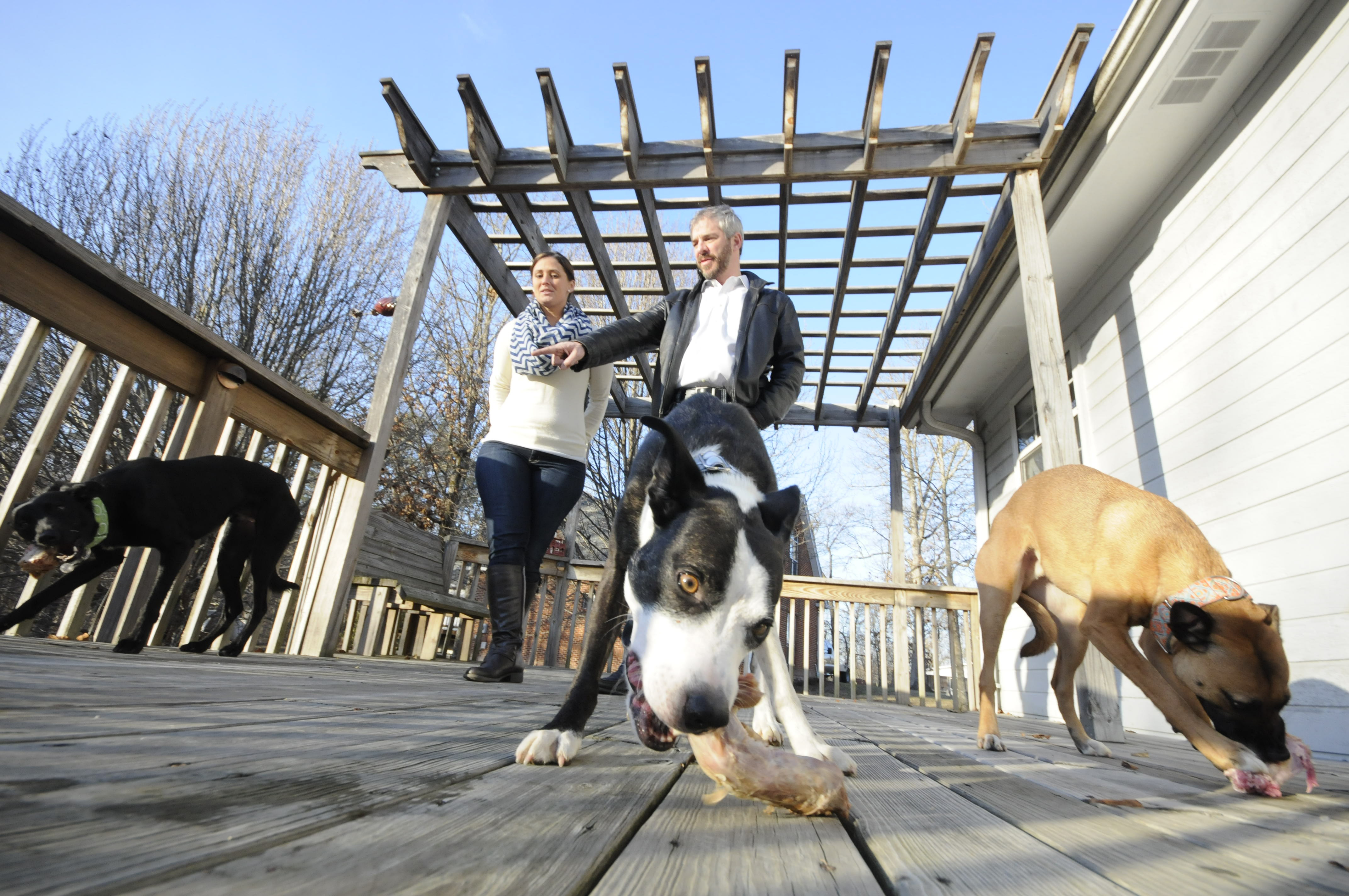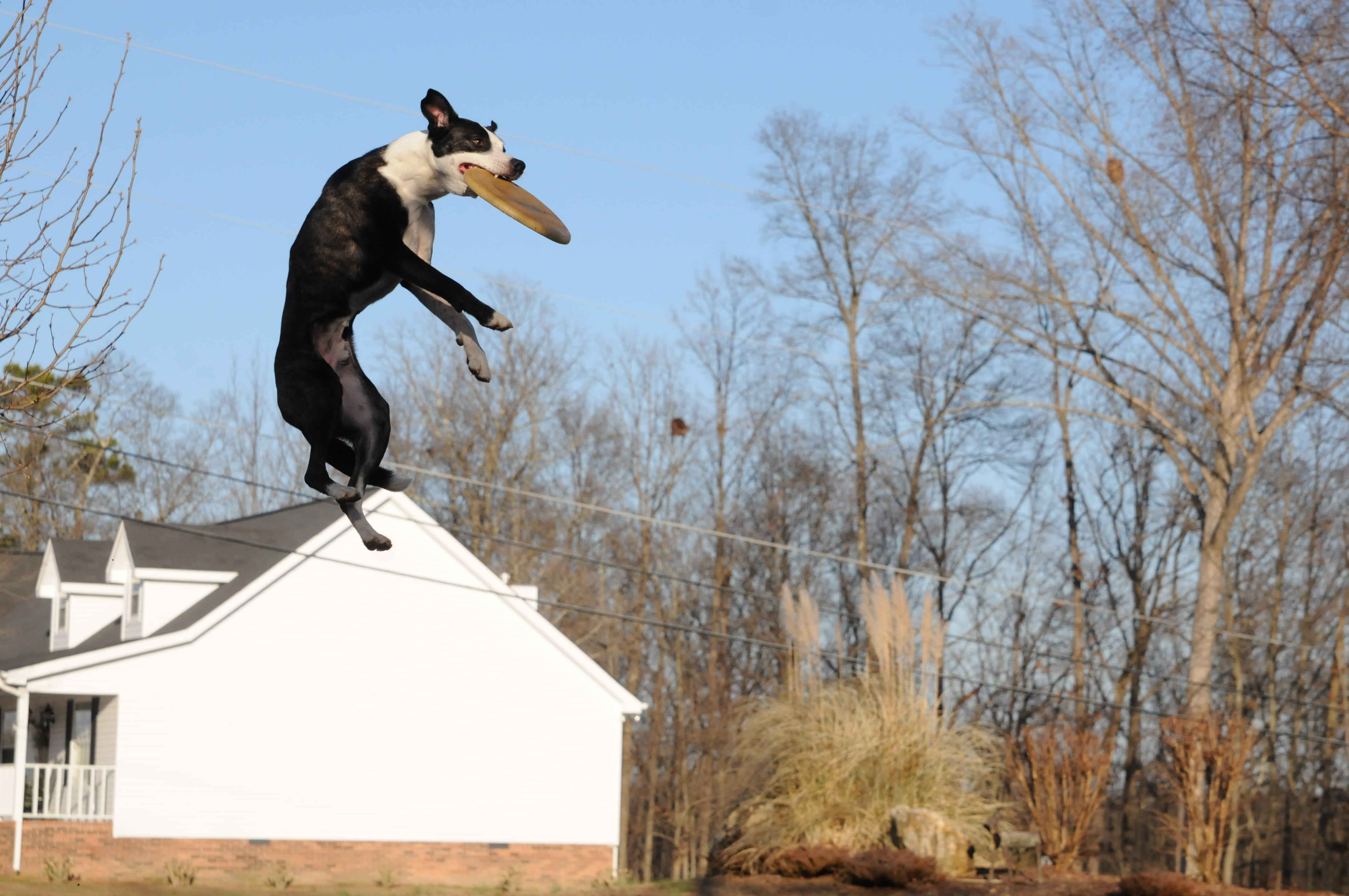Primal puzzle: Veterinarians polarized on feeding pets a more prehistorically accurate diet
Tuesday, January 21, 2014
If they were to suddenly find themselves transported 100,000 years into the past, Whiskers and Rover would probably be confounded by their ancestors' eating habits. Modern pet foods might be convenient, but science has yet to uncover fossil evidence of kibble roaming the prehistoric plains.
Some say the manufacturing processes used to create the dry foods stacked on store shelves are robbing 21st-century cats and dogs of vital nutrients their paleolithic ancestors routinely consumed. To restore balance to the food bowl, some owners are embracing "raw" diets featuring unprocessed foods that more closely mirror the daily fare of their pets' primal forebears.
Think sabertoothed tabby. Megalo-dachshund.
But the idea of a "pet paleo" diet, while embraced by some veterinarians, is considered bunk by others, who question its reported benefits as well as its expense, which can be three to four times higher than traditional pet foods.
About six years ago, Kate Corum's three-year-old golden retriever Emma was suffering from medical issues including inflammatory bowel disease and chronic ear infections. A blood test showed that Emma had allergies to chicken, beef, fish and wheat, ingredients commonly found in many commercial dog foods.
So Corum decided to switch Emma and her other dog -- a border collie-mix named Vito -- to a frozen, prepared raw food made by Nature's Variety. Because its primary source was rabbit meat, it skirted many of the problem ingredients that were giving Emma trouble.
The improvements, Corum says, came almost overnight and have carried over to her two other border collies: Enzo, 2, and Antic, 1 1/2.
"Their coats were immediately more shiny ... they do not have bad breath, they produce a smaller amount of waste and Emma's allergies and IBD have been much more controlled," Corum writes in an email.
Dr. Collen Smith, a veterinarian with the Chattanooga Holistic Institute on Main Street, says one of the benefits of going raw is it cuts out unwanted or harmful ingredients from a pet's diet.
"It's as minimal-ingredient as you can get, just like what we [humans] look for now," she says. "We want whole foods, and that's what this is. It's a whole-food diet."
Some owners who switch to a raw diet prepare their animal's food themselves, measuring out appropriate amounts of meat, bones, organs, vegetables, fruits and vitamin and mineral supplements. However, brands such as FullLife and Orijen offer the convenience of raw recipes in kibble-like pellets or patties made with fewer ingredients -- usually no grains -- and using processes such as freeze drying or dehydrating that claim to minimize nutrient loss.
Smith says these prepackaged brands address the nutritional deficiencies that sometimes result when owners prepare their animal's meals themselves.
"I don't really encourage clients to do their own because it's labor-intensive and very difficult to keep it balanced," she says. "But there are so many commercial raw diets ... [and] that makes it very easy."
Adjusting to a raw diet can take time, usually seven to 10 days, and Smith says owners should consult with their vet before making the switch since age or certain gastrointestinal conditions may impede the transition.
Even dogs who have no risk of complications may have digestive trouble during this period because whole foods are harder to break down than kibble, Smith says.
"All the sudden, the body is like, 'Whoa, I really have to work hard to break down this protein or this piece of broccoli or carrot.' It's definitely not a cold-turkey diet."
Because they are very particular to smell and texture, switching a cat to a raw diet can prove more challenging than dogs, especially after kittenhood. That's unfortunate, Smith says, since cats need an even higher amount of protein than dogs and "do phenomenally well" on a meat-heavy raw diet.
And, though the raw diet can have holistic benefits for many animals, Smith says it isn't a cure-all.
"If they're doing fine on another diet and have a lot of other issues, I leave the diet alone until we can work on other issues," she says. "It's not a silver bullet per se, ... but if it's appropriate for that animal, I will discuss it."
'Kooky'
Not everyone is a believer.
"I think it's kooky," says Dr. Kai Federico, a veterinarian and owner of Riverview Animal Hospital on North Market Street.
Raw diet brands tend to be more expensive than commercial dry foods, and he says he hasn't seen data to back up its claimed benefits.
"No one has shown that there's a compelling reason to feed a raw diet," he says. "I'm willing to go to the mat on that.
"The nutritional diseases we see are from an excess of food. I'll go out on a limb and say it's more about marketing than it is about animal health."
Studies have suggested potential risks to going raw, and not just to the animals.
Unlike most mainstream kibble brands, many raw diet brands have not received scientific substantiation through a feeding trial or laboratory analysis conducted by the Association of American Feed Control Officials, a voluntary pet food industry oversight group. An AAFCO certification, which the majority of dry foods carry, reflects that a diet has been found to be "complete and balanced" and meets the organization's nutritional standards.
Even raw diets that are prepackaged may not be nutritionally balanced. A 2011 study in the Canadian Veterinary Journal reported that analyses of five raw-food diets found three to be low in calcium and phosphorus and two to be deficient in potassium, magnesium and zinc.
Raw diets also could pose a threat to pet owners. According to a 2006 study published in the Journal of the American Veterinary Medical Association, about 6 percent of commercial raw meat diet brands contained salmonella; none of the prepared food brands that were analyzed contained the bacteria. "There is a risk of food-borne illness in dogs fed these diets as well [as] possible risk for humans associated with the dogs or their environments," the study concluded.
Federico says the majority of the dietary cases that come to Riverview Animal Hospital are related to overeating commercial dog food, not its nutritional deficiencies.
"Most dogs can eat whatever they're eating, just much less of it," he says. "If people paid more attention to how much their dogs ate than what their dogs ate, their dogs would be better off."
A happy medium
As polarized as some veterinarians are on the raw diet/commercial diet debate, there are others who say the two can, and should, coexist.
Dr. Howard Hamilton of Bradley Veterinary Hospital in Cleveland, Tenn., says the use of carbohydrate-rich grains as a primary ingredient in many dry food brands is a major contributor to animal obesity, and the preparation processes may deplete its nutritional value. Still, he says, kibble is not a killer.
"There are people out there who say that commercial diets are harmful to pets, that it's ... giving them cancer and diabetes and all these other diseases," he says. "In the 30 years I've been doing this, the life expectancy [of pets] seems to have gone up.
"I see dogs that are 16 to 20 years old or even past 20. I see cats, routinely, that are 18, 20 or 22 years of age. You hardly used to see that 30, 40 or 50 years ago. I don't know what to attribute that to, but some of it may be commercial diets."
Even raw advocates say the diet has certain drawbacks.
In Corum's case, keeping four dogs on a purely raw diet was prohibitively expensive. Initially, an athletic sponsorship with a dog food company kept the costs reasonable, but when that deal expired, she says, she began to split the difference between prepared and raw diets by supplementing their kibble with raw meat, eggs, additional fat and vitamin supplements.
If anything, Hamilton says, more owners would do well to follow her lead.
"To me, the ideal thing would be a certain amount of commercially prepared food that has all these additives ... to balance things out with a certain amount of raw meats," he says. "That's probably the best of both worlds."
SEVEN DAYS OF RAW
The following schedule created by trainer Cindy Easton Rhodes for Leerburg.com is a sample of a weekly home-prepared, all-natural diet for a 90-pound male dog:
• Daily -- 400 units of vitamin E; one tablespoon of a powdered vitamin C supplement
• Day one -- One pound of chicken necks, backs or leg quarters; 12 ounces of ground turkey, hamburger, beef hearts or chicken gizzards/hearts; one egg with shell; salmon oil
• Day two -- Six ounces of chicken/beef/pork liver or kidneys; eight ounces of chicken necks, backs or leg quarters; one egg with shell; 1/4 cup of ground vegetables; salmon oil; two tablespoons of kelp/alfalfa mix
• Day three -- One can of mackerel; 1/4 cup of ground veggies; eight ounces of chicken necks, backs or leg quarters
• Day four -- One pound of chicken necks, backs or leg quarters; 12 ounces of ground turkey, hamburger, beef hearts or chicken gizzards/hearts; one egg with shell; salmon oil
• Day five -- Six ounces of chicken/beef/pork liver or kidney; eight ounces of chicken necks, backs or leg quarters; one egg with shell; 1/4 cup of ground vegetables; salmon oil; two tablespoons of kelp/alfalfa mix
• Day six -- One pound of chicken necks, backs or leg quarters; 12 ounces of ground turkey, hamburger, beef hearts or chicken gizzards/hearts; one egg with shell; salmon oil
• Day seven -- One can of sardines; 1/4 cup of ground vegetables; one pound of chicken necks, backs or leg quarters; 12 ounces of ground turkey, hamburger, beef hearts or chicken gizzards/hearts; salmon oil
Contact Casey Phillips at cphillips@timesfreepress.com or 423-757-6205. Follow him on Twitter at @PhillipsCTFP.


